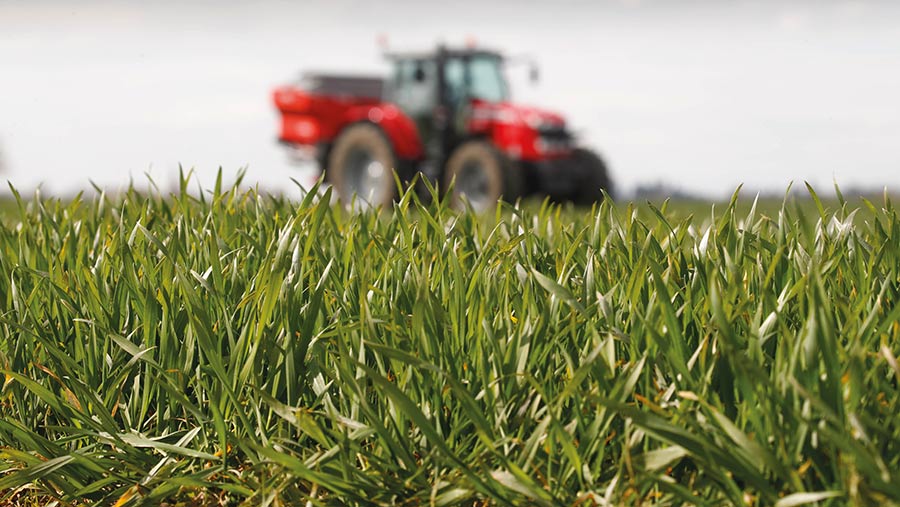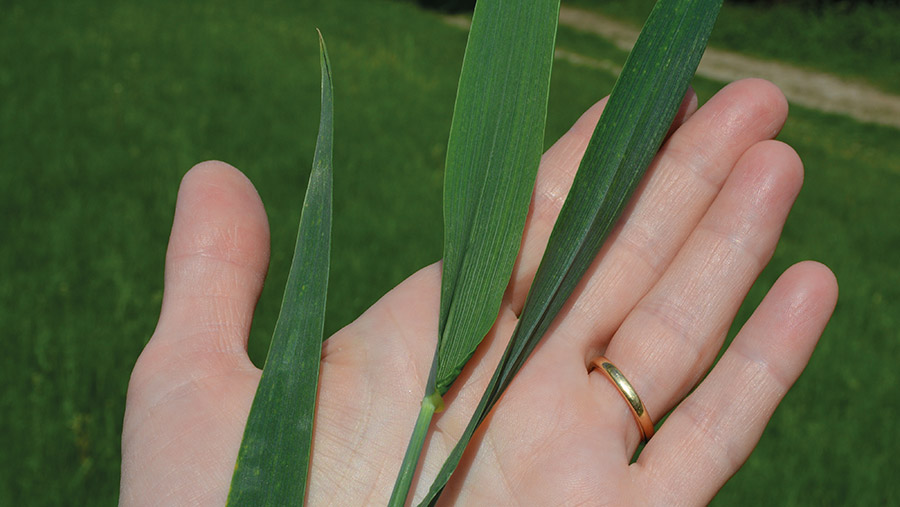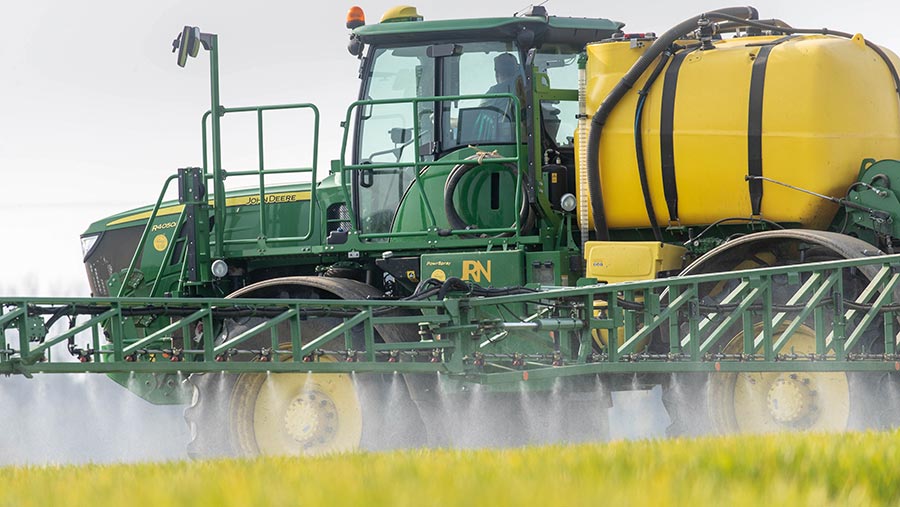
Understanding how nutrition affects plant health is still very much an evolving science, but plant sap analysis is allowing management decisions to be based on close to real-time data.
Sap analysis offered by Dutch company NovaCropControl is a more accurate way of measuring how nutrients are being used within the plant around the time of sampling, explains Ed Brown, head of agroecology at Hutchinsons.
See also: How to grow potatoes using minimal tillage
In recent years, plant tissue tests have gained some popularity for measuring the nutrient health of crops, but Mr Brown suggests these are the equivalent of chopping your arm off for analysis, while sap tests are like a blood test.
“If you sent your arm in for analysis, that would tell you all the calcium, potassium, magnesium, and so on you’ve taken up and stored in your arm over your lifetime, whereas a blood test shows you what is happening at the moment.”
Advertisement
In the same way, sap tests measure the nutrients within the phloem and xylem of the leaves, while leaf tissue analysis measures the nutrients stored in the leaves. Both have their uses – in particular, tissue analysis helps understand the success of nutrient applications at the end of the season.
How and when to sample for sap analysis
- Any crop, including all key arable crops
- Sample oldest healthy leaf and youngest fully developed leaf, separately
- Leaves must be free from disease
- Sample before 9am for full leaf tension and consistency of results
- Only take samples from dry leaves, or dry before sending with tissue
- Typically sample two to four times in season around growth stage 30 (new leaves only), GS32, GS39 and GS65 for wheat
- Fill supplied zip-lock sample bag three-quarters and send to NovaCropControl in the Netherlands
- Samples cost from £50 each via Hutchinsons
In season
But sap analysis is more useful during the season, because measuring nutrients in old and new leaves separately provides context for how nutrients are moving in the plant, explains Mr Brown.Plants always keep new growth at optimum nutrition, he says, which means they will sabotage old growth for nutrients.
This means you can use the differential between old and new leaves to understand whether the plant is becoming deficient or has an excess of any nutrient, long before any visual symptoms.
For example, all the macronutrients except for calcium, are relatively mobile in the plant.
If these are moving from the old leaves to new leaves it suggests there is an inadequate supply of those nutrients, as the plant is cannibalising its own supply.
But if the sap analysis suggests there is a slight surplus in the old leaves, then that can be read as the plant having an adequate supply.

© MAG/David Jones
“But for immobile nutrients, such as calcium and boron, which don’t move to new growth, if you have a shortage in the new leaf, you know you are going to have to feed that or get it from the soil.”
It’s not just deficiencies that you need to look for, says Joel Williams, an independent crop and soil health expert at Integrated Soils.
For example, there is research that links excess nitrogen in the plant to greater insect and disease prevalence. “We use nitrogen to drive production, but it does come with a cost.”
Explore moreKnow How
Visit our Know How centre for practical farming adviceHe says the problems arise when you don’t have the other minerals to support nitrogen metabolism. For example, when plants take up nitrates they need molybdenum, sulphur and iron to convert this nitrogen into ammonium.
The plant then requires manganese and magnesium to convert ammonium into amino acids and, eventually proteins, where a handful of other minerals play a role.
“So, if those synergistic elements that support nitrogen are lacking, it can lead to high nitrate levels, and an unbalanced plant that is then more prone to insect and disease problems.”
Nutrient interactions
Interpreting the results is complicated further by how the nutrients interact with each other, says John Kempf, a crop health expert at US firm Advancing Eco Agriculture, who has been using sap analysis for several years.“Each cell has a finite holding capacity for minerals, just as in the soil – it can only hold so many cations and so many anions.
For the cation macronutrients – calcium, potassium, magnesium, sodium and ammonia – there is a bucket, and when that bucket is filled the cell cannot hold anymore.”
So, if there is an excess of one of those, say potassium, it can create a deficiency in one of the others – for example, calcium. “And you cannot fix that calcium deficiency by spraying on more – you don’t have a calcium deficiency problem – you have a potassium excess problem,” says Mr Kempf.
What he has observed since starting to use sap analysis is that you don’t have to fix the deficiencies, you have to apply the antidote to the excesses and allow the deficiencies to fix themselves.
The same applies to anions – nitrate, sulphur, chlorine and phosphorus – while there are also synergistic relationships between some micro- and macronutrients. For example, manganese helps regulate potassium in some plants, he says.

Farmers cannot fix a calcium deficiency by spraying on more if because of an excess of potassium © Tim Scrivener
Disease control
Using that information has helped him control key diseases in some fruit crops by applying manganese to solve potassium excesses and calcium deficiencies, he says.Understanding those relationships in arable crops in the UK is still very much in its infancy, Mr Brown says. “We are still learning how to interpret the analysis.”
But the results can lead to foliar nutritional sprays being recommended where issues have been identified, he says.
“This season, several of the crops I look after have had none or just one fungicide plus nutrition, which at £2-£15/ha for a nutritional application is a considerable cost saving compared with using fungicides.
“But you have to be careful where you advocate reductions. If you’re still producing crops in an unhealthy soil, piling on 200kg N/ha, the additional nutrients from sap analysis will be more about removing limitations to extra yield rather than justifying reduction in fungicide spend.”
He concludes that to achieve significant reductions in fungicides, it all has to come together.
How does balanced nutrition help with pest and disease control?
Minerals in the form of macro- and micronutrients are catalysts in driving photosynthesis and plant growth. For example, manganese, nitrogen, magnesium and iron have a very direct role in the photosynthetic process in turning carbon dioxide into glucose.That glucose is then used by the plant to build a whole range of other plant compounds, again using macro- and micronutrients within enzyme systems to facilitate their conversion, explains Joel Williams of Integrated Soils.
Among the compounds created are defence materials, such as anti-feedants with a bitter taste, cell strengtheners, physical barriers and root exudates to recruit microbial communities to help protect the plant from attack, he says.
“So we have to optimise the plant nutrient status, whether it is for production or for plant health, including resistance to diseases and pests.”
Some minerals are obviously required in greater quantities than others, but a deficiency or, indeed, excess of a nutrient can limit the photosynthetic potential, and therefore reduce the ability of the plant to build both passive and active defences, he says. “All of the minerals are important.”
Evidence for the potential to manage disease and pests through balanced nutrition has been found in research, although there are knowledge gaps. “But it’s clear that as part of an integrated system, balanced nutrition can support immune processes and be part of the toolbox.”





